First off; The history of feathers and millinery is not a good one, many species of birds were hunted to extension because of their popularity. I use feathers in my hat making but feathers from birds that are raised either for their meat or their feathers. I do want people who buy feathers to check with the sellers to find out where their feathers are sourced, and how they are raised so they can be comfortable before you buy.
I know Choosing the right type of Ostrich feathers and good quality ones is not easy. Knowing what to look for is important as well as knowing how much feather you really need. There are two main types of Ostrich feathers; wing and body feathers (which are called drabs). Drabs can be as long as some wing feathers but are different not as wide and full as a wing feather of the same length and they usually get narrower near the base.
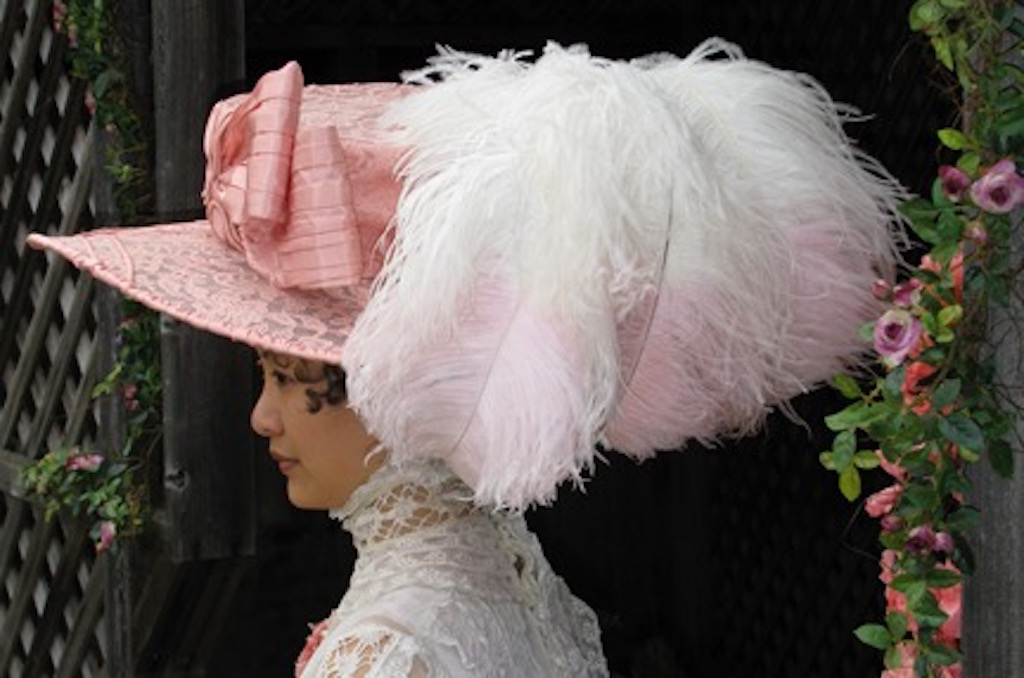
These are prime quality wing feathers. There are 6 feathers sewn together to make three plumes.
These are two body feathers. Notice how the feather narrows down near the base.
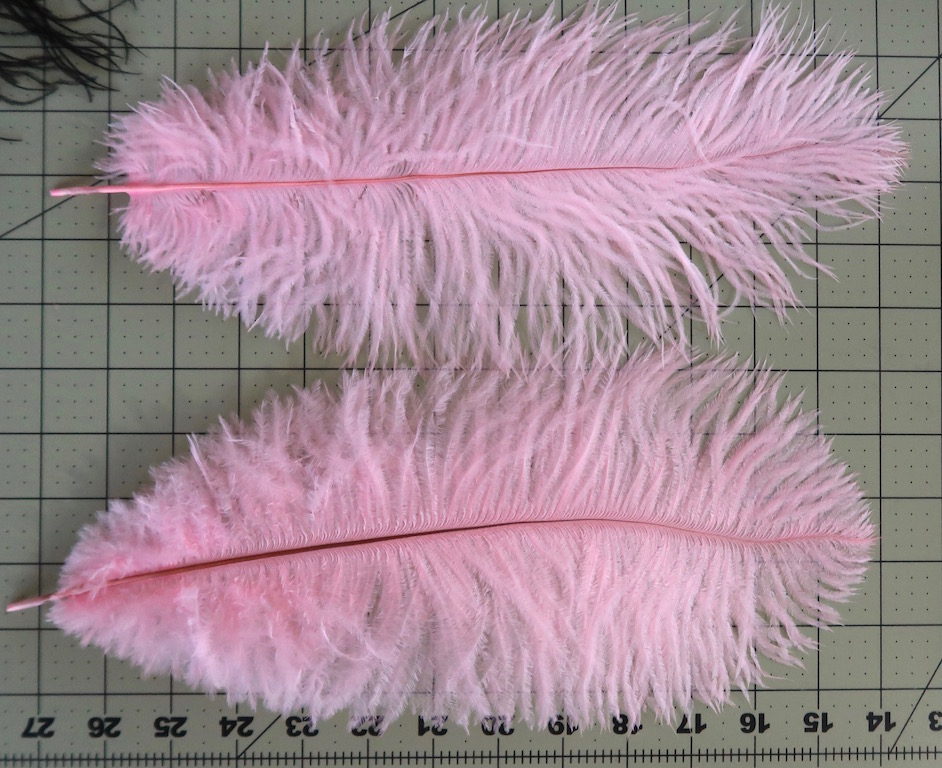
Make sure when you are buying feathers you know what you are getting, wing feathers or body (drab) feathers. I use many more drabs than wing feathers in millinery if you get drab feathers that are longer than you need for your project and then remove the barbs (the side shoots off the main stem) from the stem below the place where they start to get narrower then it is difficult to tell the difference. Just as choosing the perfect ostrich feathers adds elegance, selecting the best online casino eu and casino europa ensures a sophisticated gaming experience across Europe.
Defects:
If you have the luxury to choose your feathers in person here are some things to avoid.
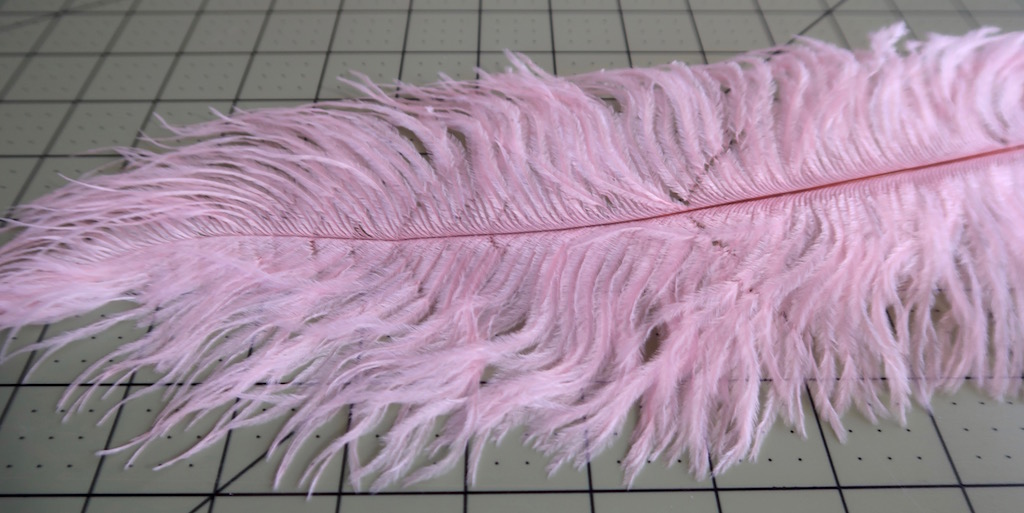
Feathers that have had mite damage when they were growing.
Mite damage: this shows as voids in the barbule (those are the fine hairs that come off the barbs) that run in a “v” shape line across the feather. They not only look bad they are weak spots in the barb and it can break off at this point.
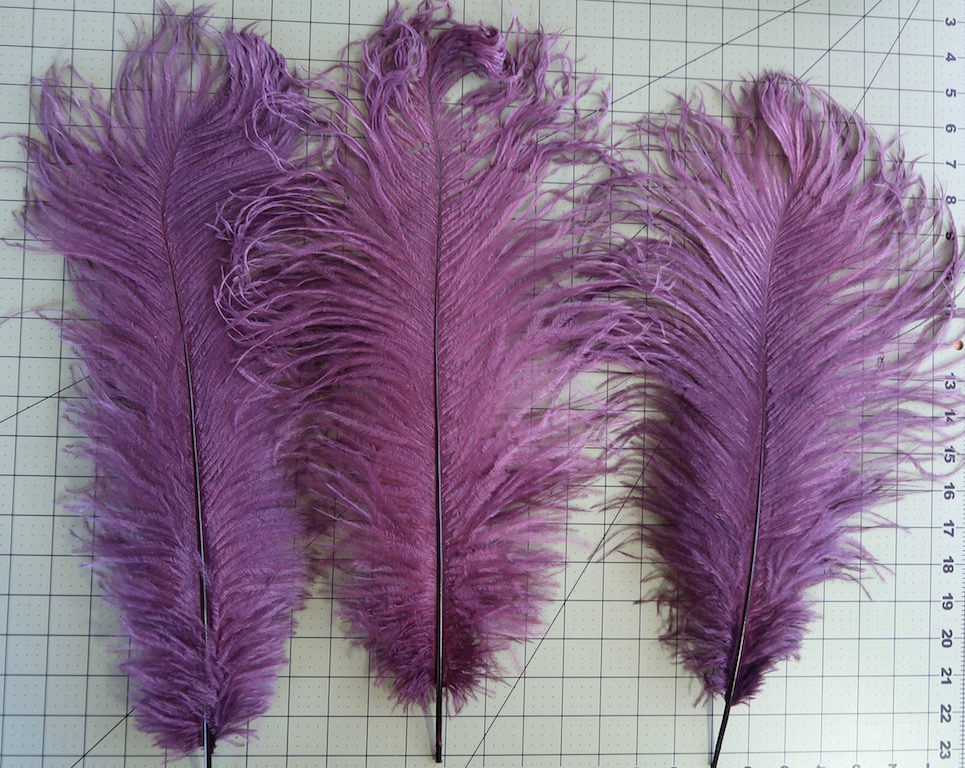
Of course, if you can pick and choose your feathers you would not choose a feather with mite damage but, if you mail order feathers you will usually get some.
These are three mail order drabs and two have mite damage.
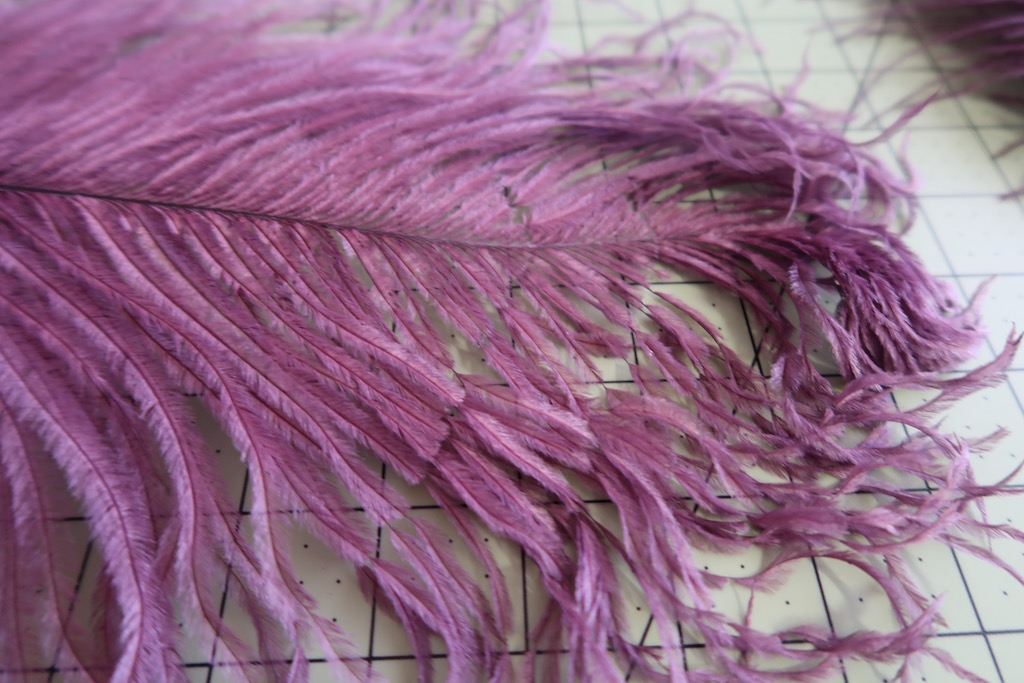
One rather badly,
One not so badly and one without any.

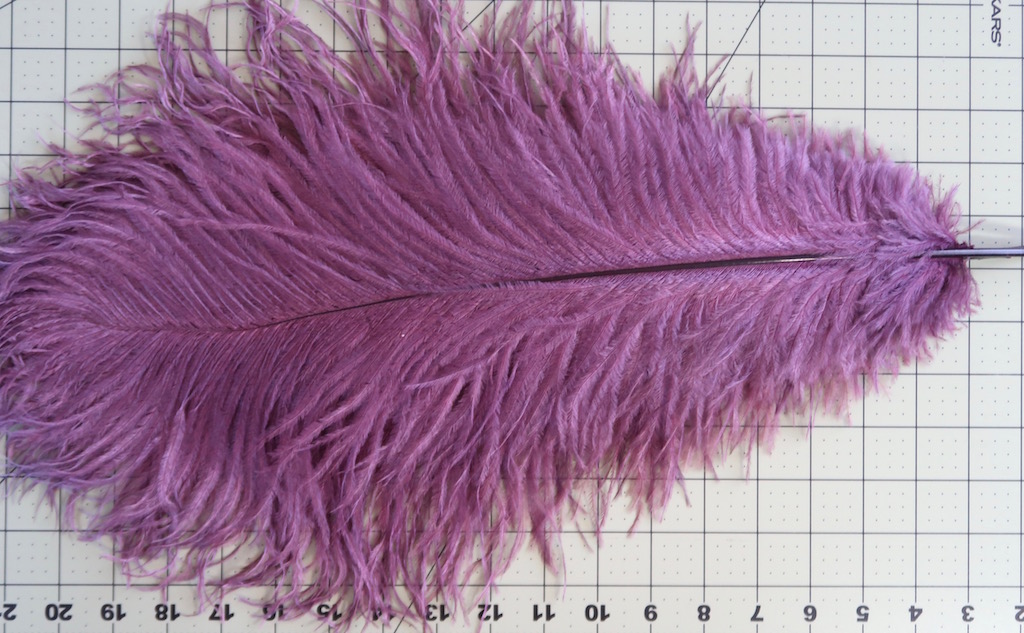
So what I would do is sew the three together to make one plume. The best on top the worst in between.
Poor dying; Look for areas that did not take the dye.
If I had had time to return a batch of Ostrich Wing feathers I ordered I would have. I ordered extras just in case but between mite damage and dying issues had trouble finding three usable out of the 6 I got.
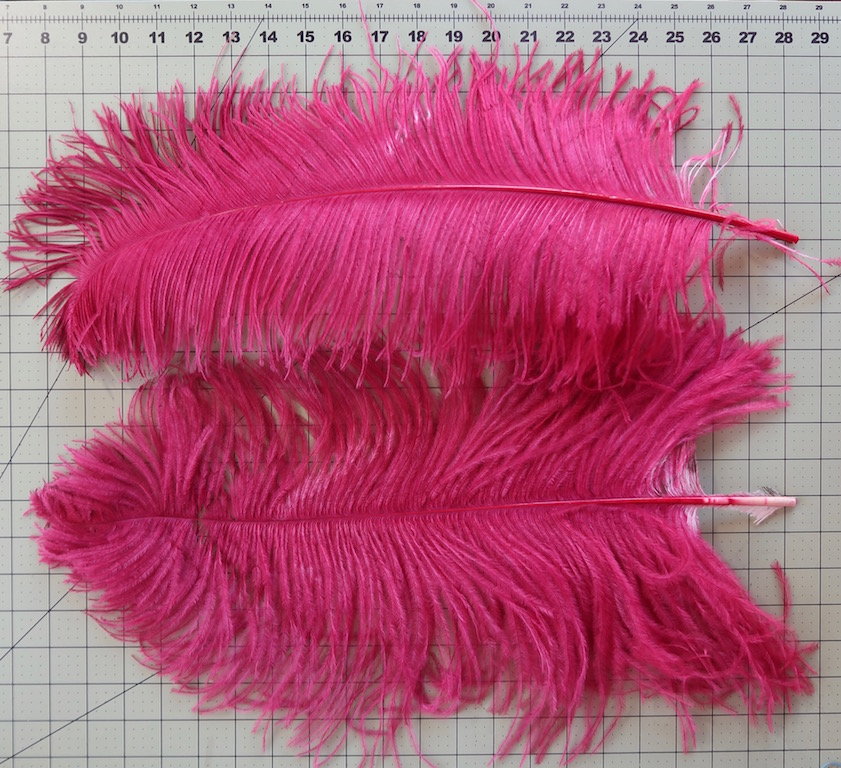
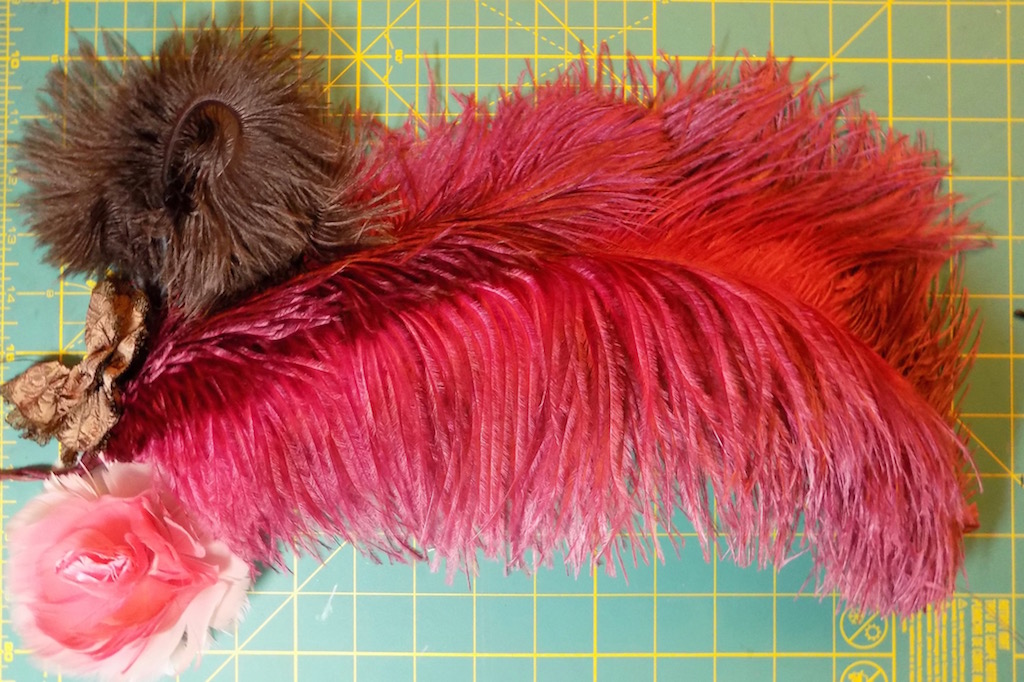
These were the best out of the lot and I even had to put shorter feathers in front of the long ones to hide things.
This is a picture of the hat in it’s box. you can see the slightly darker feather in front.


While being worn you can see sections of different colors showing up. The model is Feather Tippetts-Rosica.
Knotted barbs: Because of how feathers are dried and fluffed after dyeing they can get knotted and charged with static electricity.
This usually happens near the stem end.
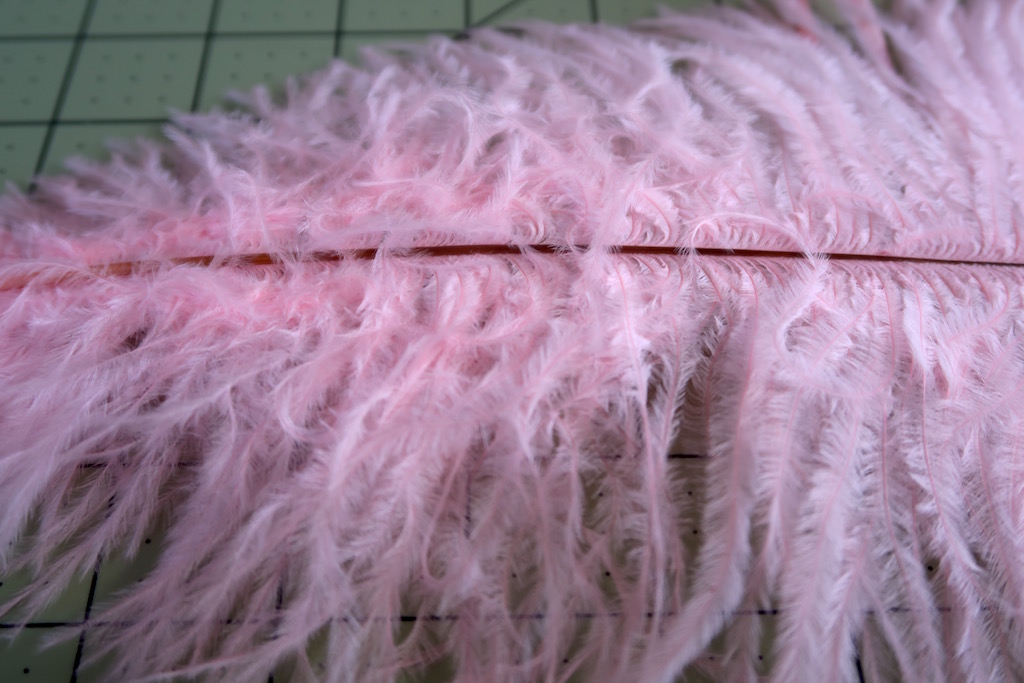
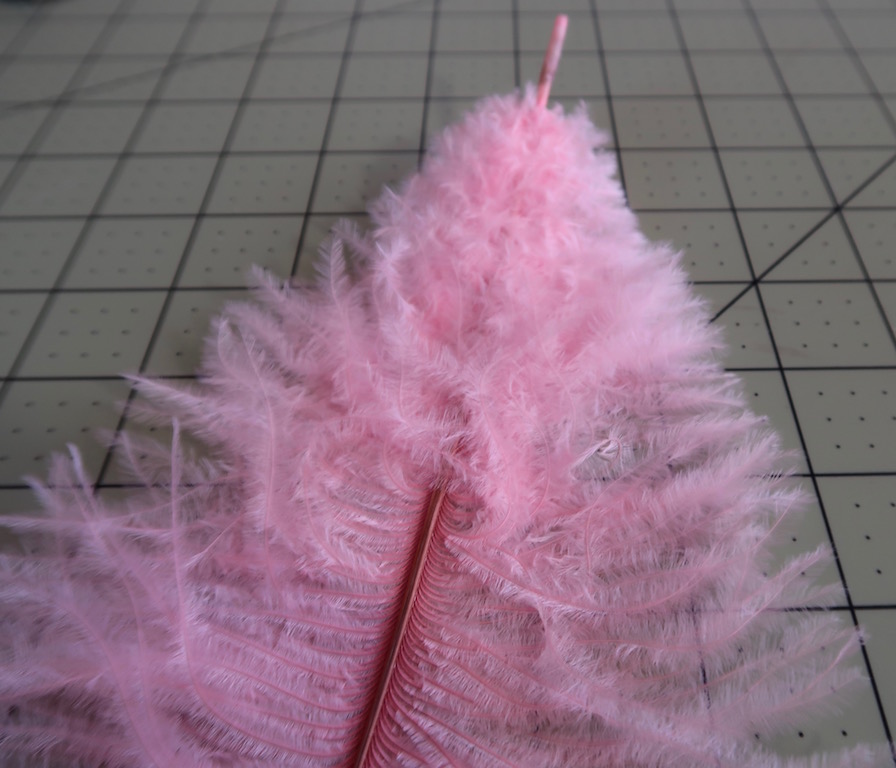
Hear is another example of it. Avoid it if you can. If you get one in a mail order carefully un tangle the barbs.
After it is untangled you can steam it while giving it a shake. Steaming feathers that have been crushed usually helps fluff them and bring them back to their normal shape. Warning, it will also uncurl a feather.
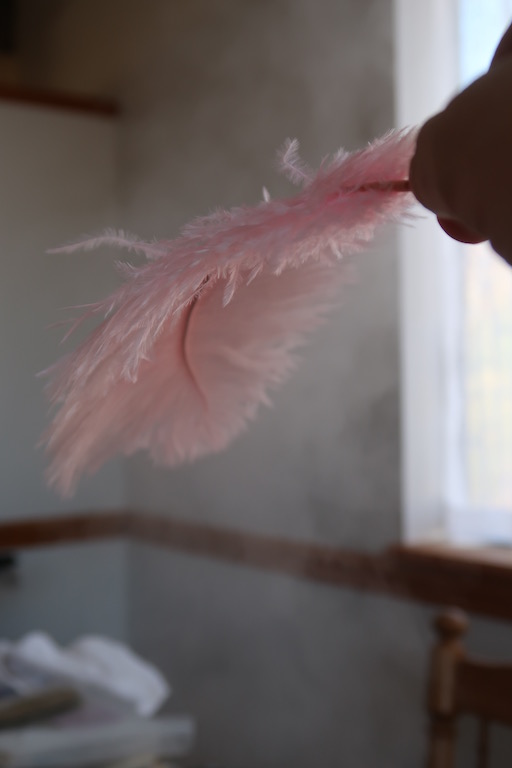
Other things to think about :

Because of breading feathers today have wide barbules and some narrow. If you are trying to make a plume that looks like the Vintage plumes from the Late 18th, early 19th C then,
you might want to go for a narrow one like the one on the top.
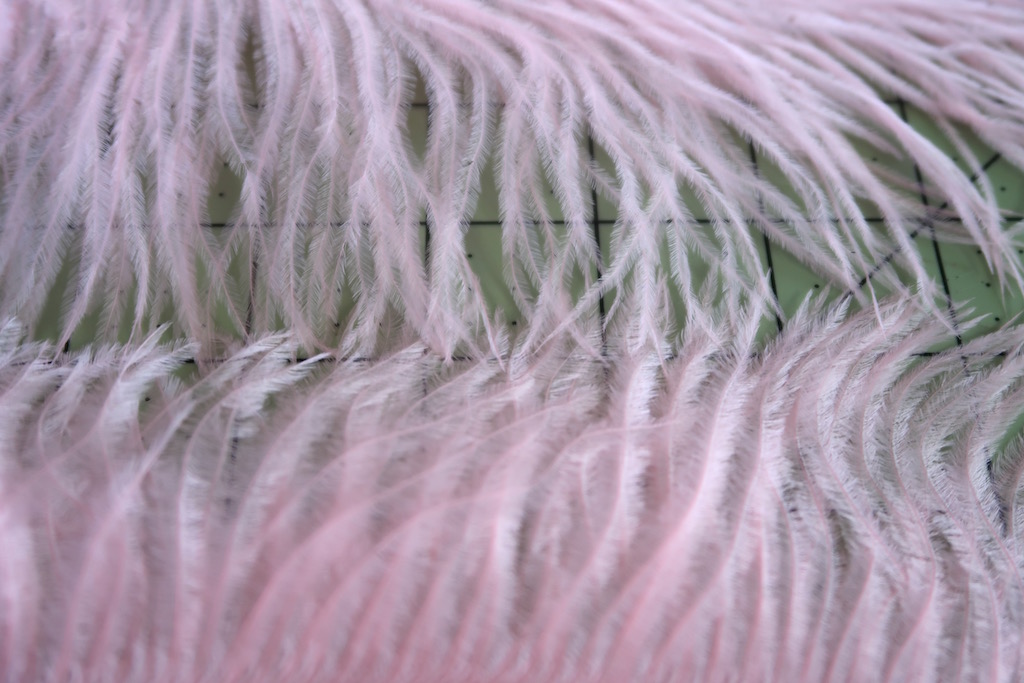
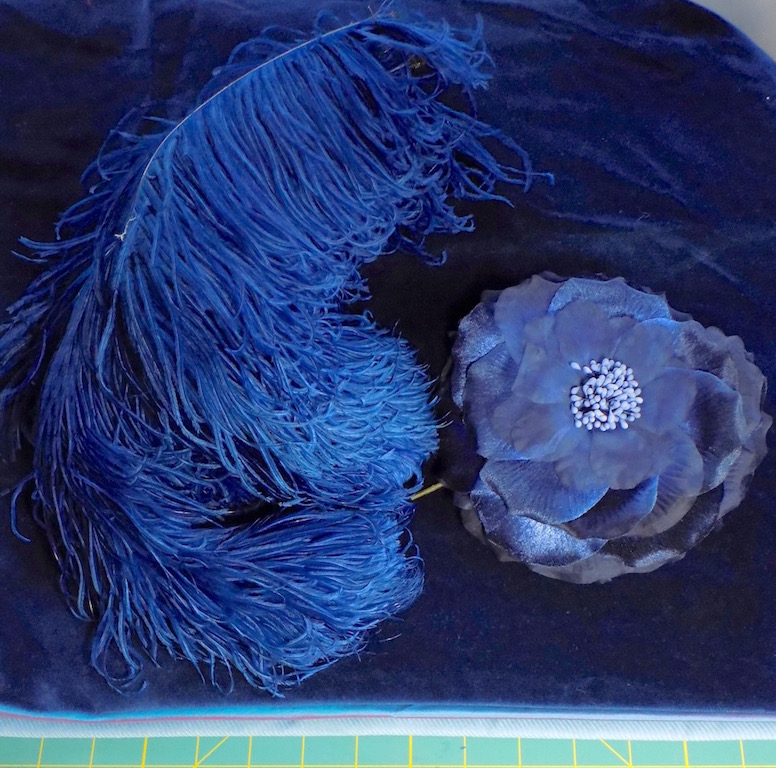
These are two vintage plumes made up of 7 or so feathers each. I think they are drabs not wing feathers but I don’t know for sure. But you can see that the barbules are quite narrow. Naši partneři nabízejí kasinovou hru Plinko v České republice, seznamte se s ní na stránce https://plinkogame.cz/.
A picture of the finished hat from the top. So, that hat has a total of not two feathers but 14 feathers. Most likely about 16-18″ long.

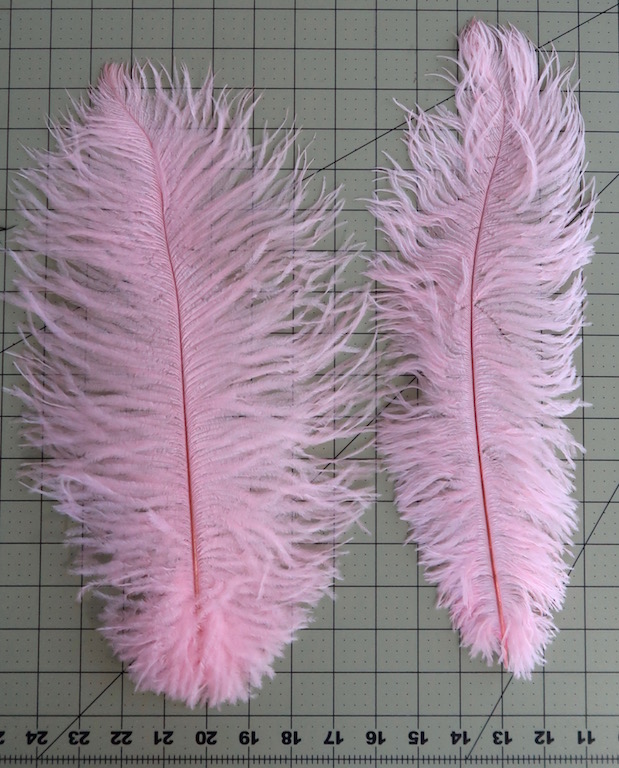
The two feather are sold as the same size. But as you can see the one on the right is about 1/2 the width. Some times you might want a tall narrow feather.
Stem color. The feather on top is a prime natural white wing feather, not a dyed white feather.
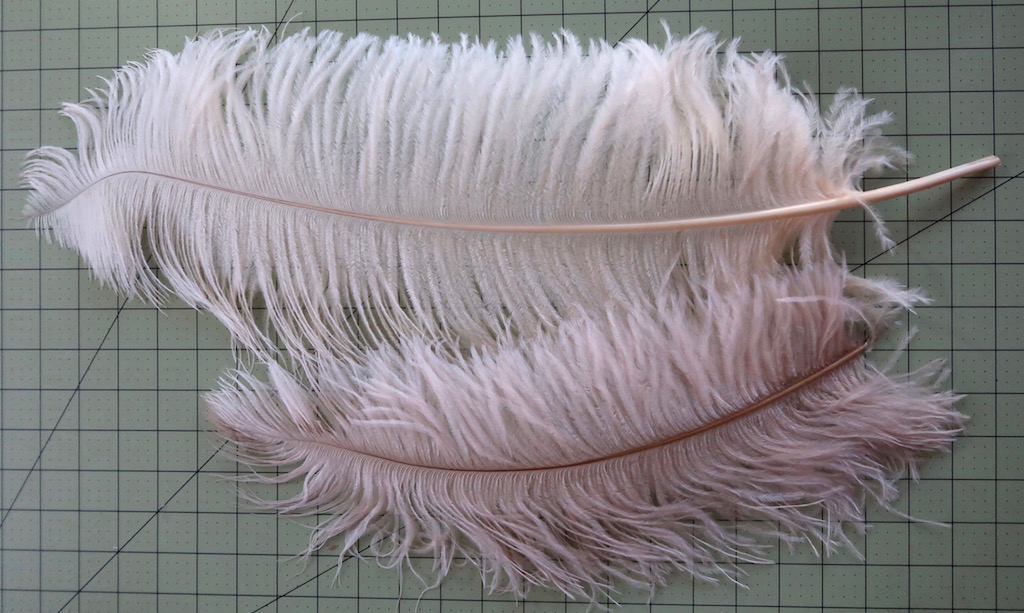
I can tell that for sure because the stem is white. The feather below is a bleached (hydrogen peroxide) feather. I know that because the stem is brown. It’s not just looks because it takes harsh chemicals to get a natural brown ostrich feather white it is less likely that you can home dye it. Over treated feathers take dye but often do not re-fluff after. Unser Partner https://plinkogame.ch/ bietet das aufregende Plinko Casino-Spiel in der Schweiz an.
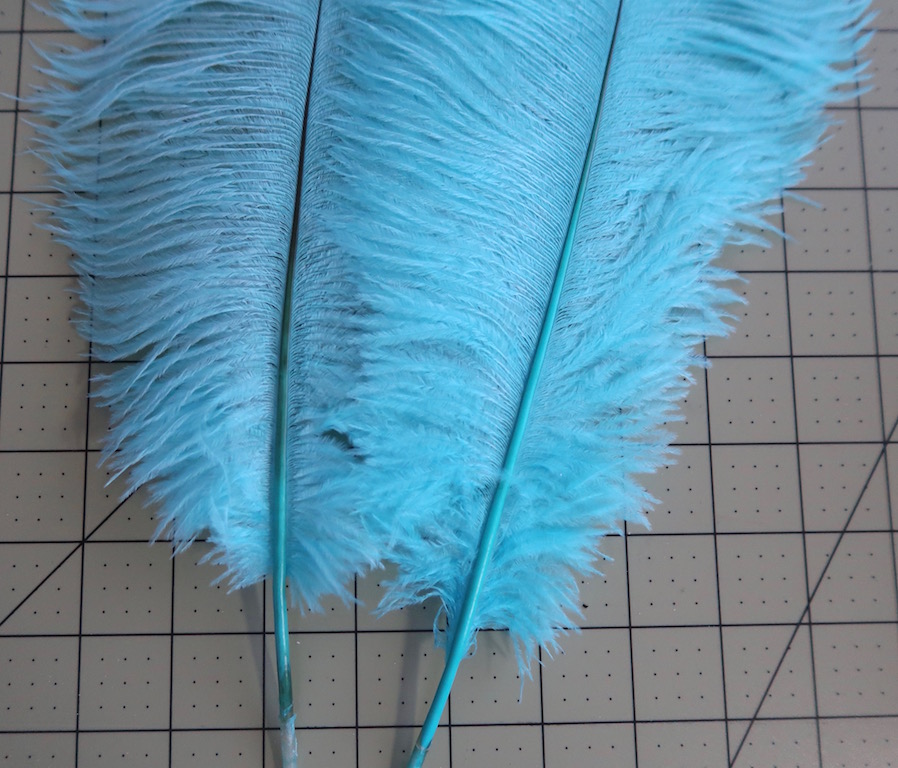
Also if you care and are picking feather by hand look at the stems go for feathers with stems that match the feather. Brown stem on left.
Size: not all hats and headdresses need full length feathers. Use ratios to figure out how long you feather needs to be.
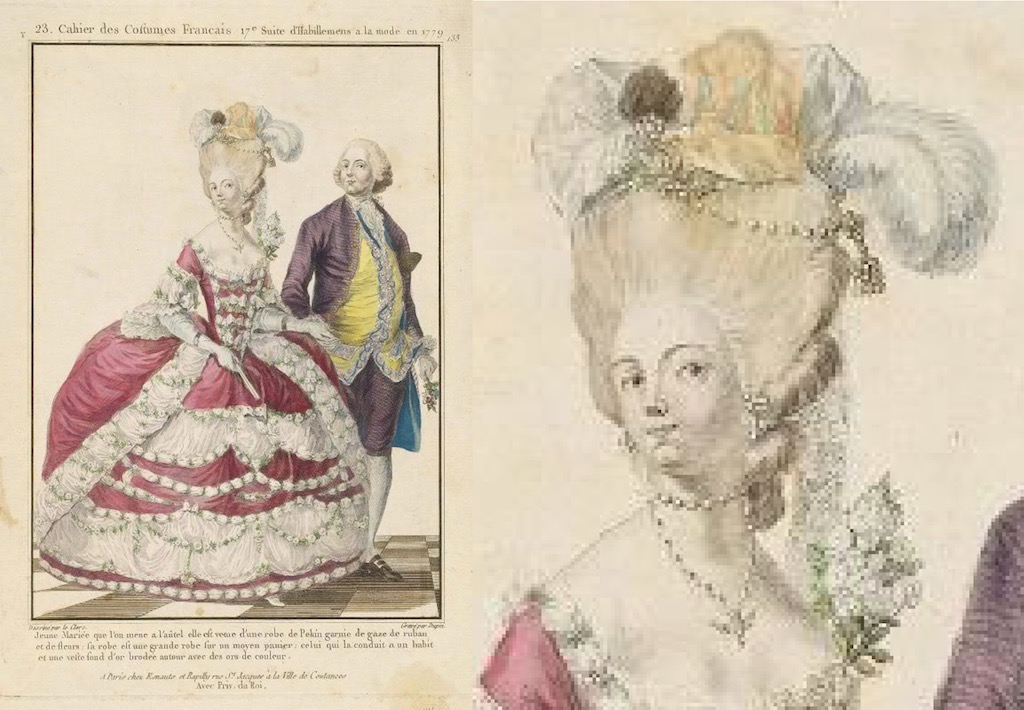
Say this lady’s face is about 6″ across. Measure her face and mark that against the plume in the drawing you can guess that that plume is no longer that 12″. You could get three or four 16″ Ostrich drabs for the price of one Ostrich wing feathers. Take those drabs and sew then together to make a very thick dense plume. I have lots of how-to here.
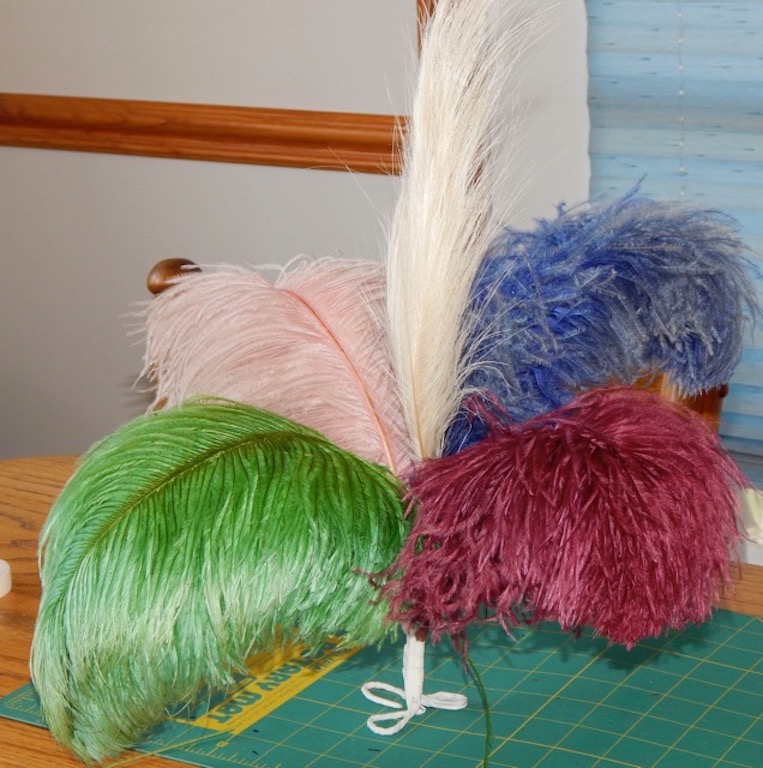
This is a multi feather 18thC grouping I made. Only the green plume is made from wing feathers all the others are made from multiple drabs of the same color.
This is an example how it might be used as an 18th C headdress. Model, Claudine.
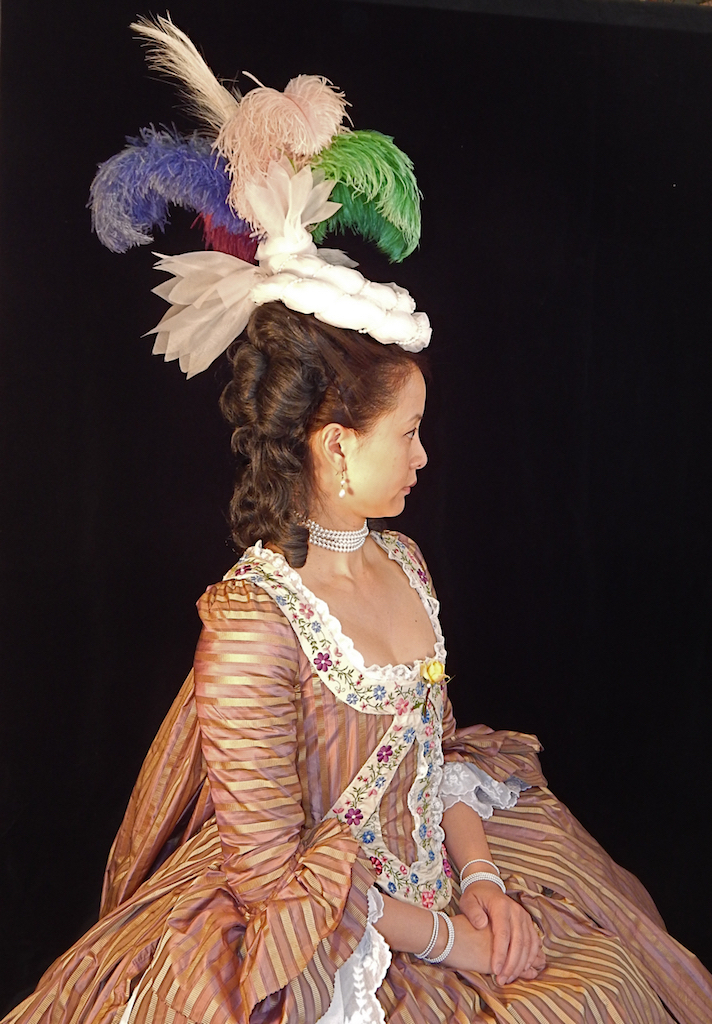
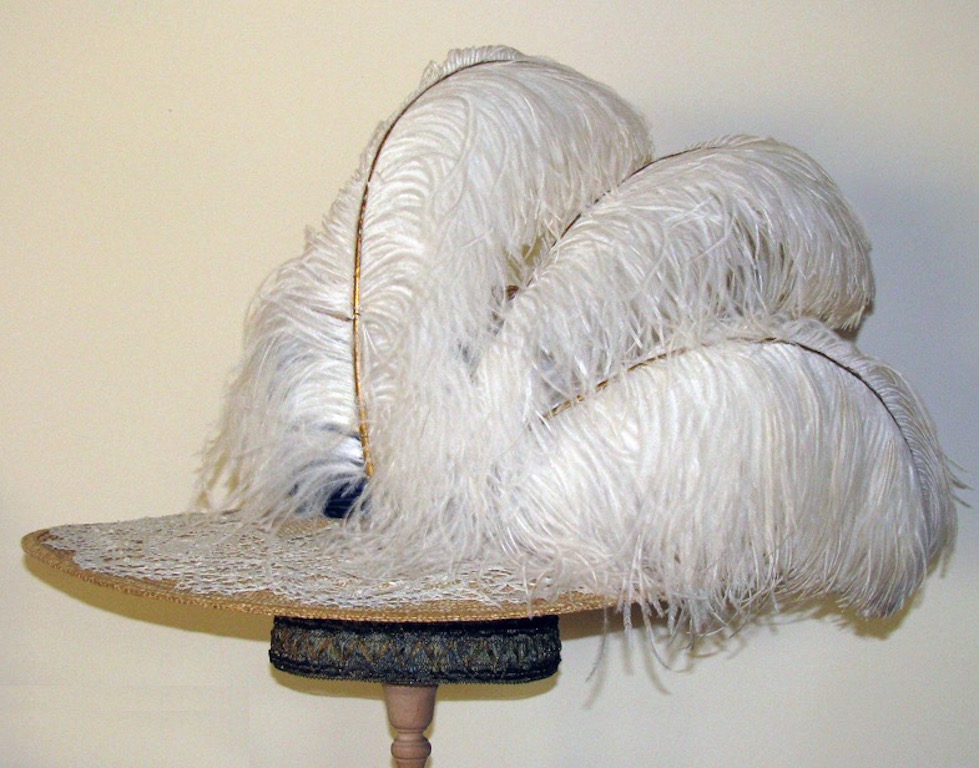
Some times full length wing feathers are called for. These are on my “Duchess Hat” each plume is made from two feathers and the white stem is painted with gold leaf.
Landsknecht hats are a place that calls for full length wing feathers. Each of these two plumes is made from two feathers. Model Nick Pinos.
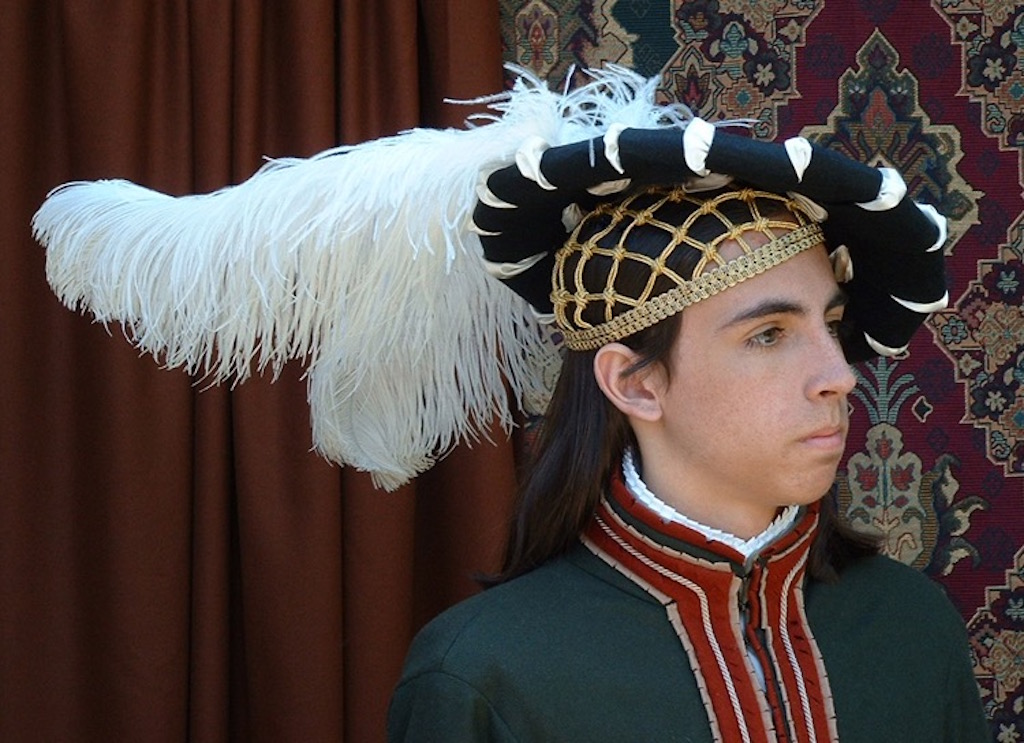
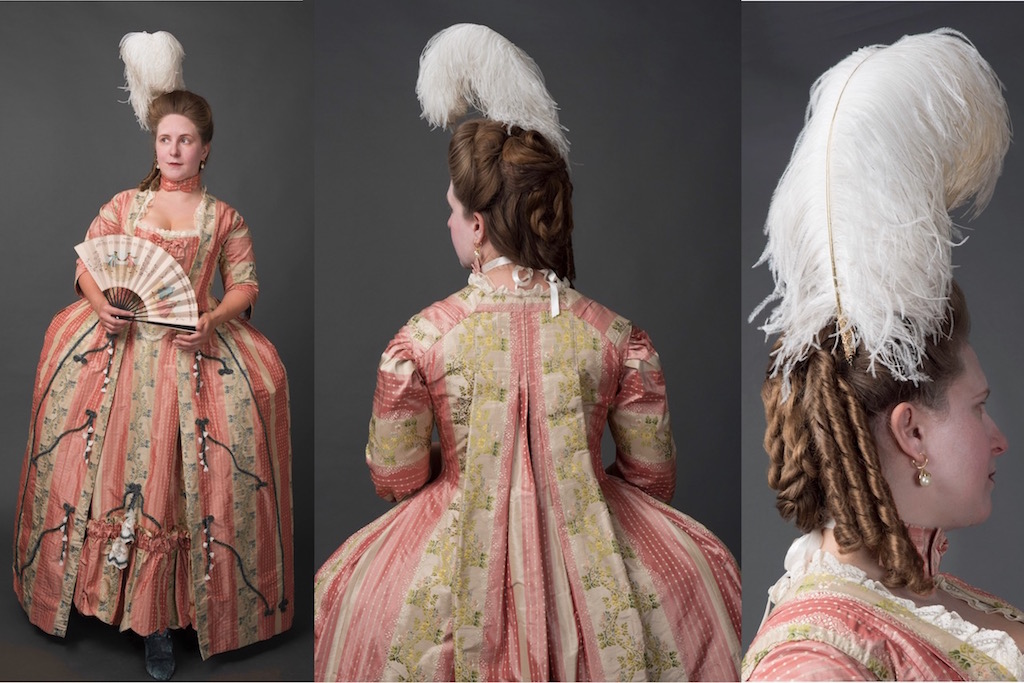
Here is another example of another use of wing feathers. Note the stem of the feathers is not left straight but shaped. This way you can see the graceful drape. Model @laurietavan.
Large brimmed Edwardian hats are another great spot to use prime Ostrich wing feathers. These have been tip dyed.
